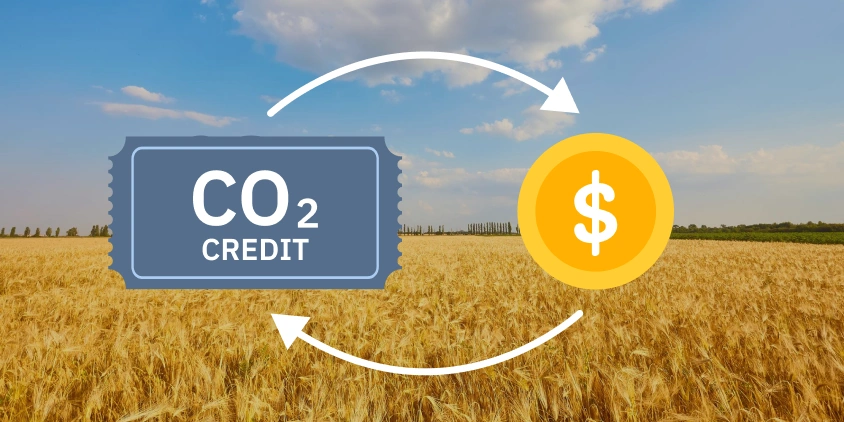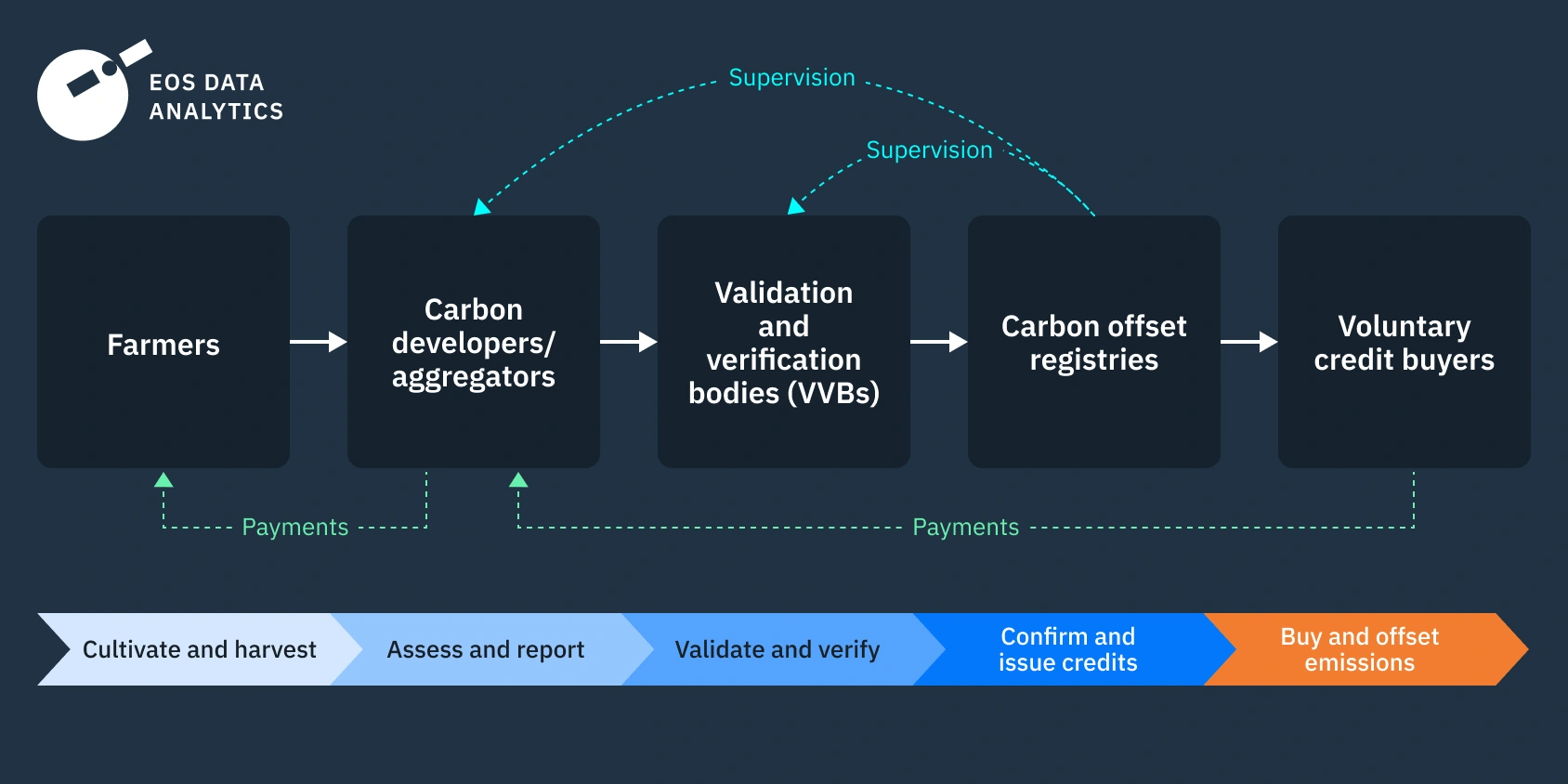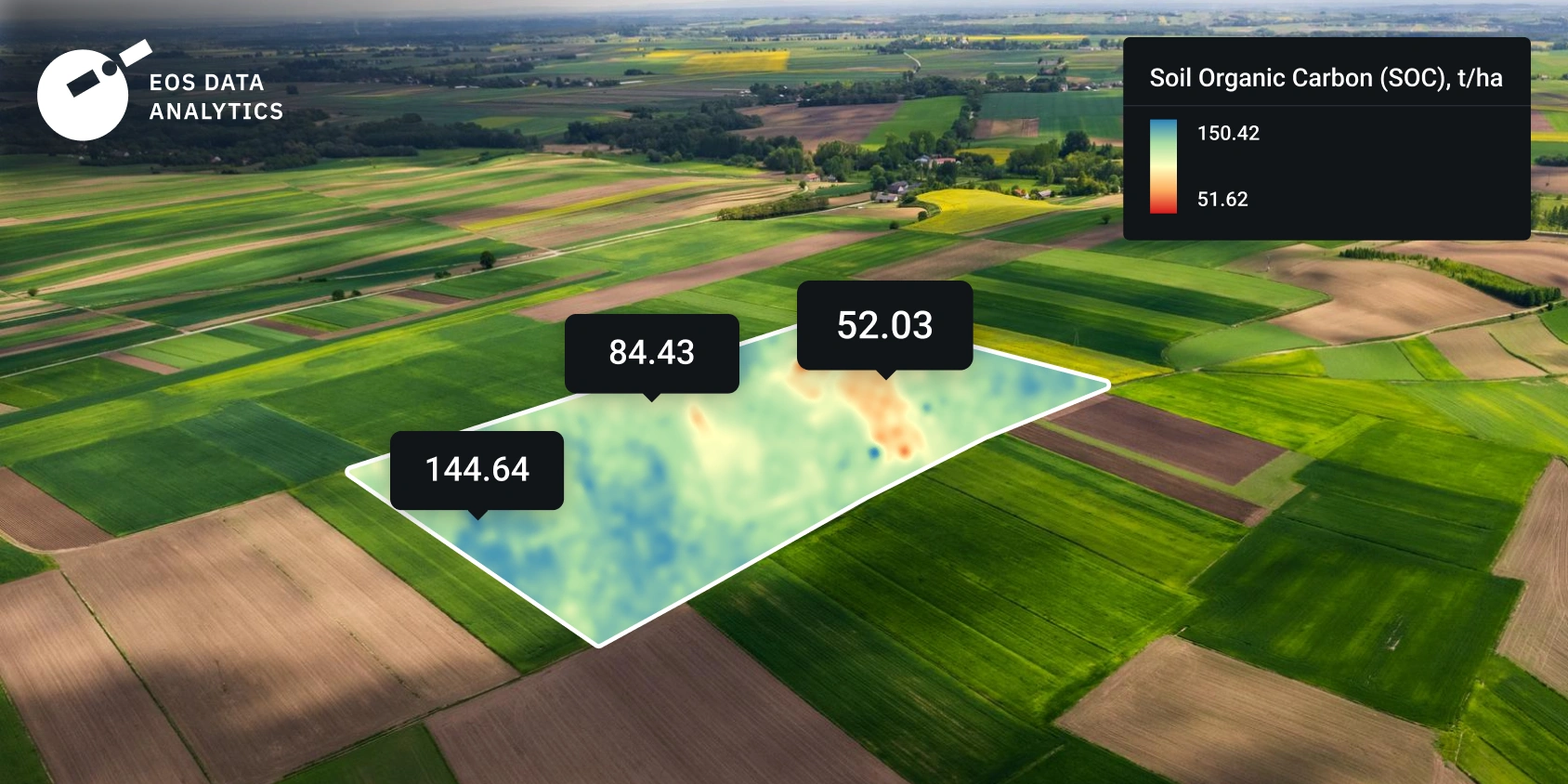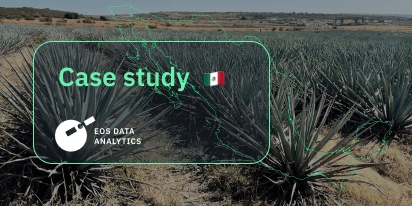
Carbon Credits For Farmers: How To Get And Sell
Today’s initiatives, like the Paris Agreement, show that the world has become much more oriented toward solving ecological issues than a decade ago. Carbon credits in agriculture are exactly the tool created within such programs to motivate the farming sector to get involved in sustainable agriculture. But what are CO2 offsets for farmers? How do they work? How do farmers get carbon credits, and how can growers sell them to make a profit? This comprehensive guide delves into the complexities of CO2 offsets and explains all points that may arise.
What Are Carbon Credits in Agriculture
Carbon credits for farmers are part of a market-based approach to promote the reduction of greenhouse gas emissions. One carbon credit represents the right to emit one metric ton of CO2 or the equivalent amount of another greenhouse gas (GHG). Farmers can earn these credits by implementing sustainable agricultural practices that sequester SOC (soil organic carbon) in the soil, reduce emissions, or both . When new agricultural practices reducing GHG emissions are implemented, verified, and certified, farmers sell carbon credits and get a new revenue stream while maintaining sustainable agriculture.
After generating carbon credits, farmers can sell them to buyers, including businesses and individuals, who want to offset their emissions. These credits are traded on special markets, where both sellers and buyers interact. Regardless of their specific reasons, buyers are looking to reduce their emissions footprint, and landowners can provide an effective way to achieve this by producing carbon credits.
Process Of Carbon Credit Farming
From the initial implementation of sustainable practices to farmers receiving payment for carbon credits, several key stages must be completed. These include assessing the current level of carbon sequestration in the soil and verifying the results of the practices implemented. Here’s a simplified step-by-step guide about carbon credits for farmers focused on entering the specialized market and obtaining credits with the help of a project developer:
- Find a Carbon Project Developer: Farmers usually start by locating a project developer who can guide them through the buy and sell process.
- Provide Farm Information: Then, farmers share basic details about the farm, including current practices, future plans, and the location of fields.
- Initial Estimation: The project developer uses farmer’s data to estimate how many CO2 offsets a farm could potentially generate.
- Implement Regenerative Practices: Farmers adopt additional regenerative farming practices, such as cover cropping or reduced tillage, that enhance SOC sequestration.
- Data Collection and Monitoring: After a year or so, data on the effects of practices on the farm can be gathered and analyzed to assess the amount of SOC sequestered.
- Third-Party Verification: A third-party expert collects, analyzes, and verifies the farm’s data. To ensure accuracy, they might conduct a site visit or use remote sensing technology. The verifier calculates the number of CO2 offsets earned.
- Sell Carbon Credits: Once verified, carbon offsets can be sold on the voluntary market, providing farmers with a new revenue stream.

How To Get Carbon Credits For Farms
Landowners usually participate in the carbon credit market by implementing relevant practices. Several types of projects can help generate CO2 offsets for farmers:
- Enhance soil health and structure. Return biomass to the soil as mulch, adopt conservation tillage or no-tillage practices, plant cover crops during the off-season to improve soil quality, reduce evaporation, and support nutrient cycling.
- Optimize water. Upgrade to flood irrigation systems to recycle runoff water.
- Nutrient management. Implement nutrient management to maintain plant and soil health with reduced reliance on chemical fertilizers and pesticides.
- Promote sustainable land use. Restore degraded soils, convert land into grasslands or forests, and practice crop rotation to ensure abundant soil nutrients and transform open areas into thriving ecosystems.
- Support carbon sequestration. Promote forest regrowth to capture and store CO2 within trees and plants, contributing to climate change mitigation efforts.
- Reduce emissions. Switch to alternative fuel sources like lower-carbon biofuels and improve manure management to enhance sustainability in agriculture. CO2 offset markets are playing a key role in accelerating the transition from fossil fuels to renewable energy sources and fostering a low-carbon economy .
How Can Farmers Sell Carbon Credits And Get Paid
The quickest way for farmers to sell carbon credits is through online exchanges, which function similarly to stock markets. High-quality credits that meet top registries’ standards generally command higher prices. To participate effectively, farmers must find a relevant carbon credit program and secure documentation proving land ownership and detailing land management practices. This documentation is crucial for verifying the claimed SOC sequestration .
Before finalizing any contracts, farmers should conduct thorough research to ensure they receive fair compensation for the credits. Reviewing the contract terms will help avoid overestimating SOC sequestration, which could lead to future liabilities or undervaluation, which may result in lost income. While brokers can assist in managing the sale of credits, they typically charge a commission, so farmers must balance the benefits of professional help against the costs.
Farmers must navigate various payment structures and potential fees to sell and get paid for CO2 offsets. Payment methods may vary, including per acre, as a percentage of the profit from the sale, a flat fee, or per ton of SOC sequestered. It’s crucial to thoroughly review contracts for details on these payment methods and be aware of possible fees, such as:
- Brokerage fees: These are charged by aggregators for creating and managing the carbon credits for farmers.
- Holdback amounts: Funds reserved to cover potential non-compliance or insufficient carbon storage.
- Verification fees: Costs for verifying SOC sequestration through soil samples, models, or satellite imagery.
The value of carbon offsets can vary greatly, with some priced at under $1 per ton of CO2, while others may exceed $50. A key determinant of these price differences is the specific nature of the project involved.
EOSDA`s SOC And SOC-Related Solutions
EOS Data Analytics (EOSDA) offers innovative solutions to estimate the amount of carbon in the soil before sustainable agriculture practices are implemented. We offer many high-technology solutions that may be useful in generating carbon credits for farmers.
- EOSDA utilizes a top-notch algorithm to analyze soil testing data and model the SOC storage in it. Regardless of the climatic and geographical conditions, we can handle relevant data with maximum accuracy.
- EOSDA’s SOC solution can accurately forecast SOC levels by analyzing different field activity scenarios, helping farmers optimize their practices for sustainable land management.
Utilizing EOSDA’s Variable Rate Application (VRA) Mapping enables landowners and farmers to optimize nitrogen fertilizer application, thereby reducing the release of nitrous oxide (N2O), a potent greenhouse gas. - EOSDA employs advanced algorithms to detect the presence of cover crops in fields. This technology allows farmers and project developers to verify that planned cover crop activities are being executed, ensuring adherence to SOC sequestration practices.
- Tillage detection is a key strategy for carbon sequestration, making it essential to monitor farmers’ tillage practices. Remote sensing technology allows for efficient and time-saving monitoring without the need for physical inspections, enabling the detection of no-tillage, minimal tillage, and conventional tillage practices on fields.
Find out more about Soil Organic Modeling, our custom solution that can be useful in the context of a carbon credit program for farmers, or write to sales@eosda.com for a detailed consultation.

The discussed practices offer farmers significant financial motivation to implement environmentally friendly techniques to reduce GHG emissions, enhance soil health, and improve water retention. Moreover, by using next-gen software solutions like EOSDA’s, farmers can reduce the costs of implementing sustainable practices and perform the necessary monitoring of their lands. These efforts provide the generation of CO2 offsets for farmers, which can then be sold on credit markets, providing an additional income source and promoting regenerative agriculture.
About the author:
Lidiia Lelechenko holds a Master Degree in Viticulture, Winemaking & Marketing obtained in ESA (École supérieure d'agricultures d'Angers). She has over 6 years of experience in various roles related to SaaS solutions sales and research activities in sensory analysis. Currently, Lidiia is responsible for strengthening EOSDA presence and recognition on European markets as an Account Executive.
Recent articles

Digital Tools Improve Soil Health And Yields In Mexico
EOSDA and ITTA supported a Guanajuato farm with contour-line planning, monitoring tools, and practical guidance to reduce soil erosion and improve yields in the long run.

Analyze 2025 & Plan Your Best Year Yet: LandViewer Christmas Offer
It’s the most wonderful time of the year! The Christmas holidays are here, and so is your chance to analyze 2025 and plan a prosperous 2026 with more affordable Pro plans in LandViewer.

EOSDA Models Climate Change Impact On Sugarcane Yields
EOSDA modeled future temperature, rainfall, and other climate impacts on Veracruz sugarcane. The results help growers plan long-term adaptation strategies, including timing, varieties, and irrigation.